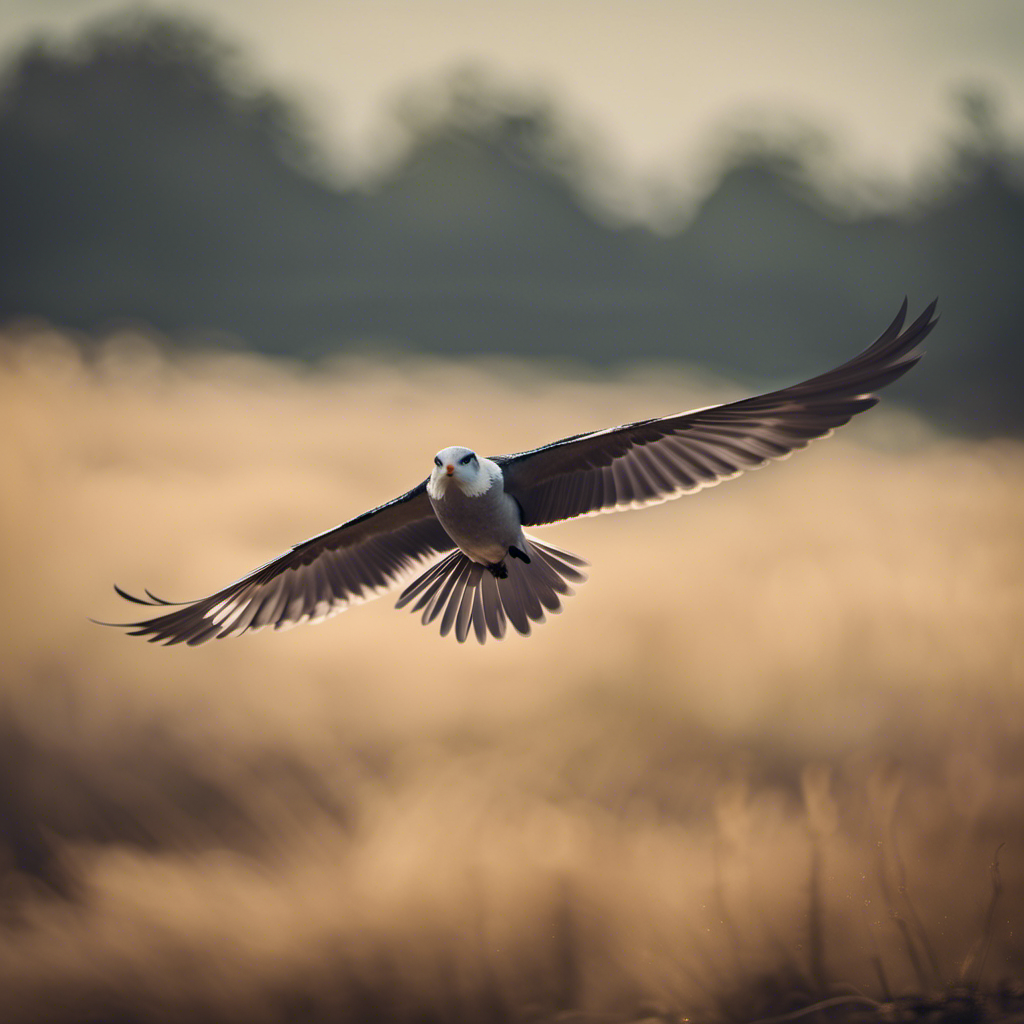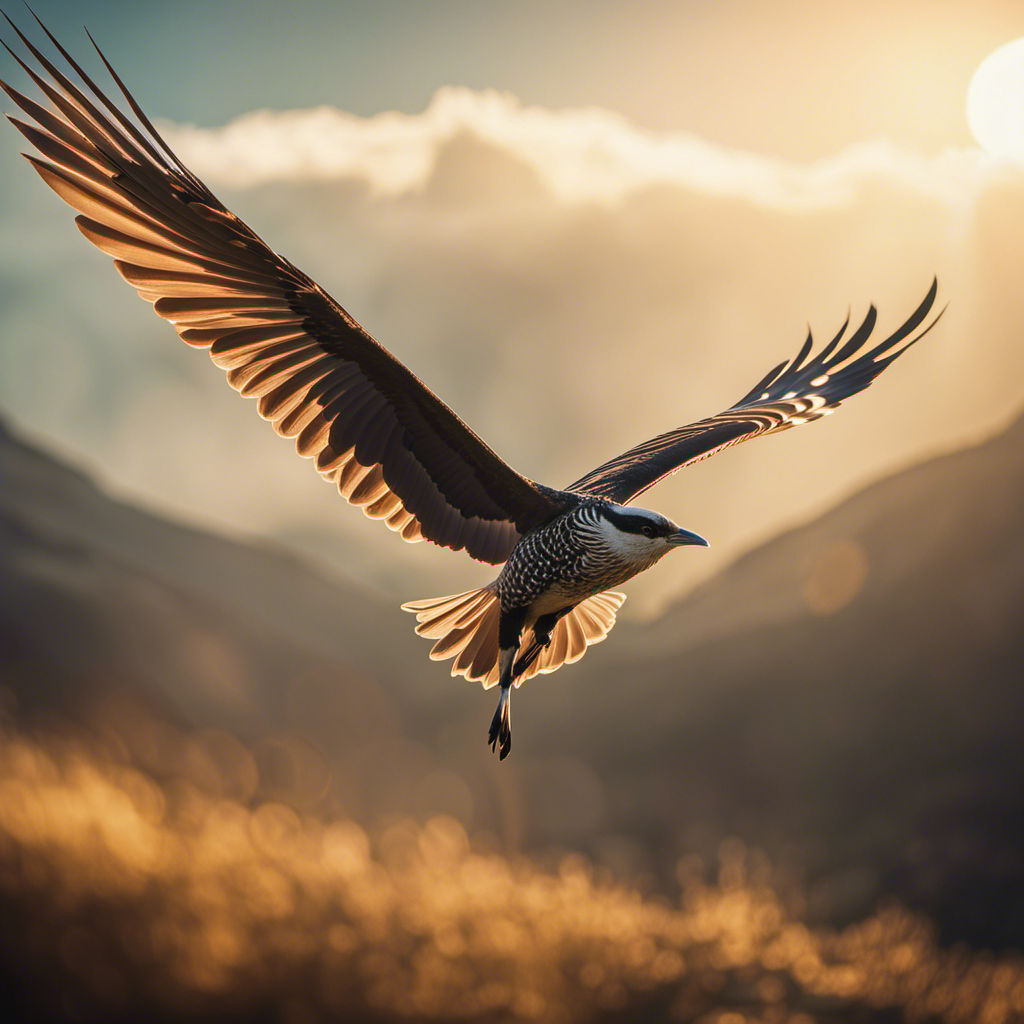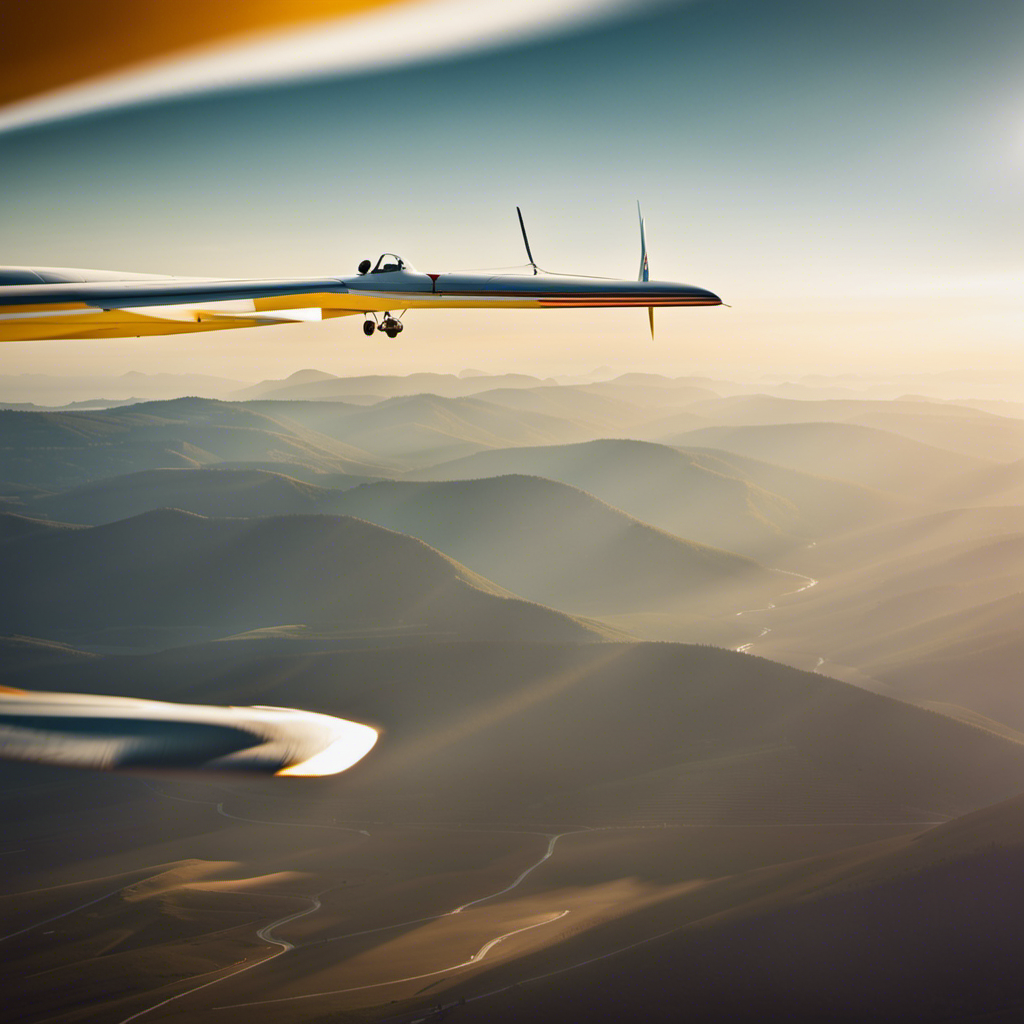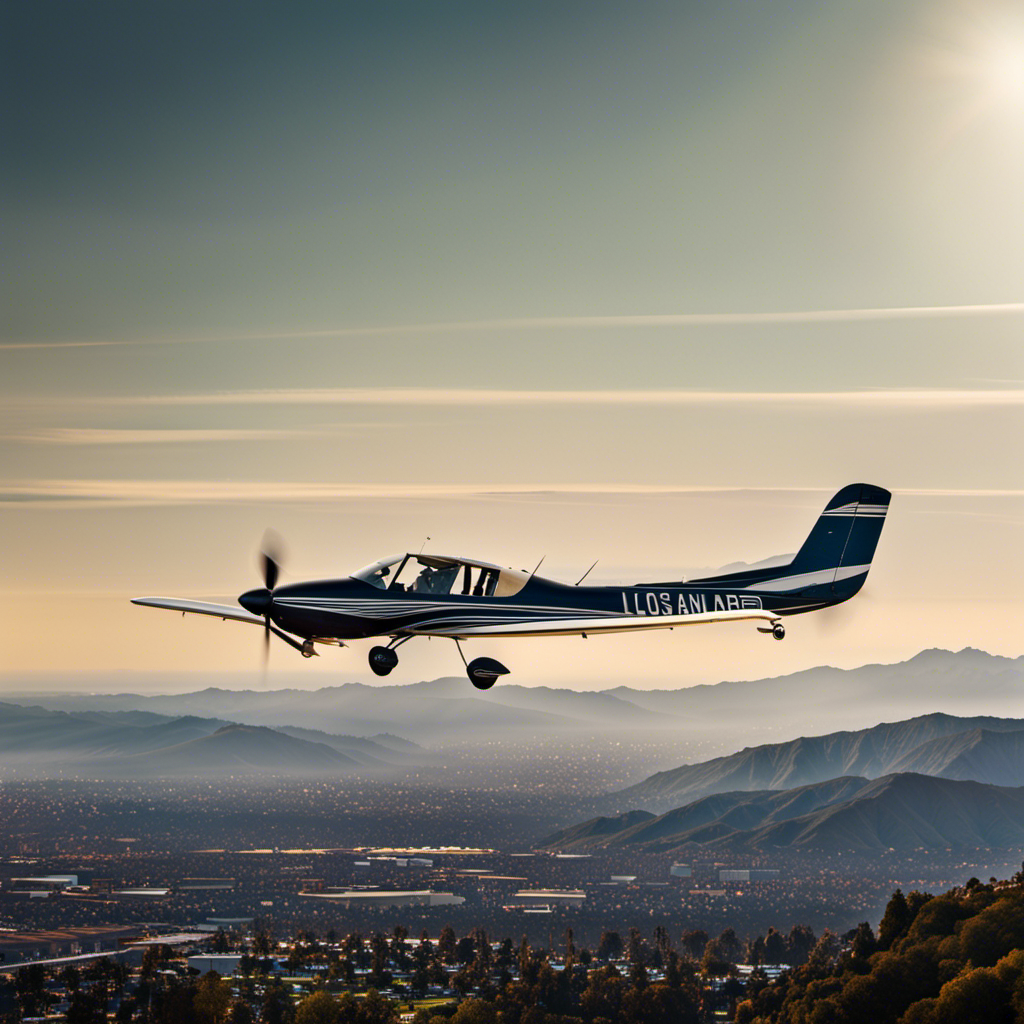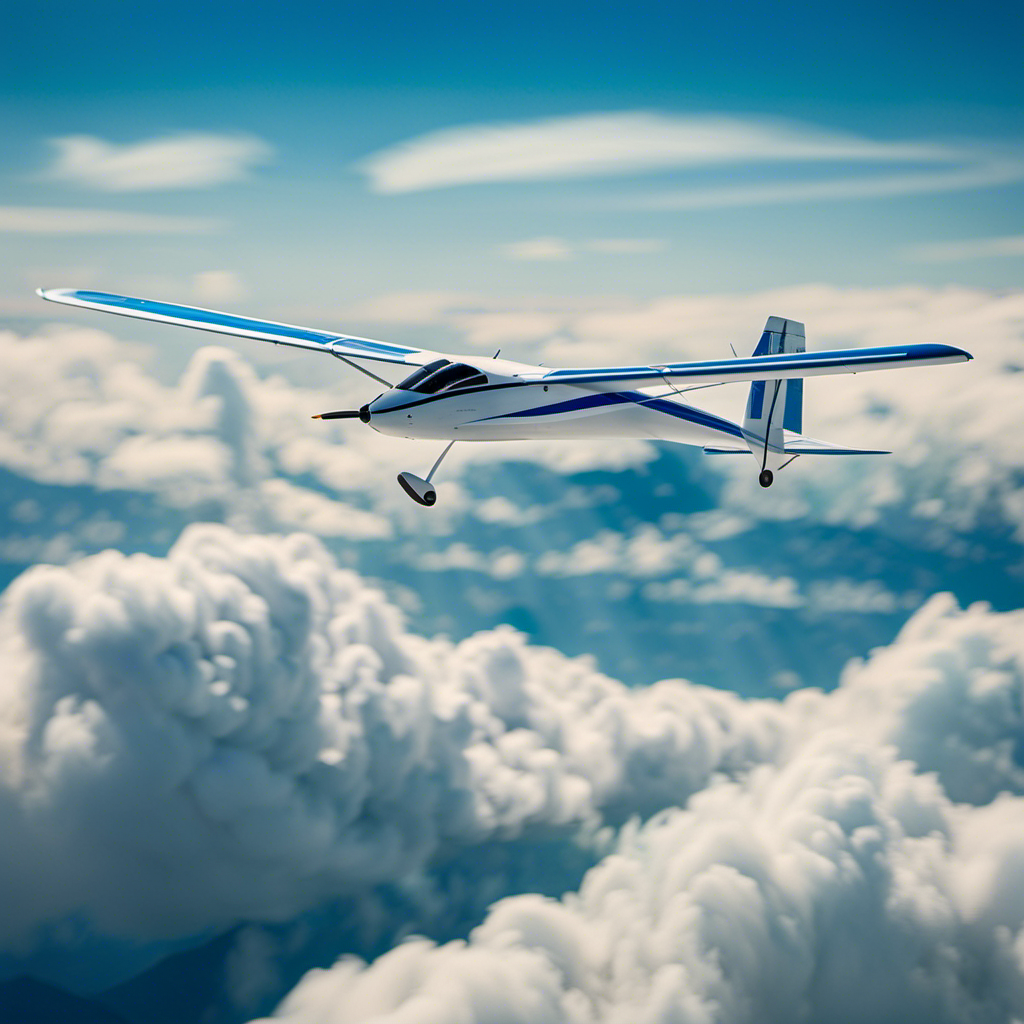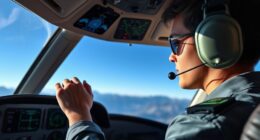Have you ever imagined effortlessly flying across the sky like a bird, soaring on the wind currents? Get ready, because your wildest dreams are about to come true!
In this article, we’ll delve into the captivating world of gliding and explore its history, mechanics, and various types. You’ll discover the basic principles behind this exhilarating activity and learn about the training and certification required to become a skilled glider pilot.
So buckle up, because we’re about to take flight and explore the incredible world of gliding!
Key Takeaways
- Gliding is a recreational activity that offers a sense of freedom and tranquility.
- It improves piloting skills, concentration, decision-making, and spatial awareness.
- Gliding competitions and events bring together pilots from around the world and foster camaraderie.
- To get started in gliding, one should take lessons from a certified instructor, research local clubs and schools, schedule a trial flight, and obtain the necessary equipment.
History and Origins of Gliding
So, you want to know the history and origins of gliding?
Gliding, also known as soaring, has a fascinating past that dates back to ancient times. The first recorded attempts at gliding can be traced back to the ancient Chinese and Greek civilizations. In the 9th century, an Arab poet named Abbas ibn Firnas designed a flying contraption, which he used to glide for a short distance.
However, it wasn’t until the late 19th century that gliding truly took off as a recreational activity. Pioneers like Otto Lilienthal and the Wright brothers made significant advancements in glider design and control, paving the way for modern gliding.
Today, gliders are sleek and sophisticated aircraft that rely on aerodynamic principles to stay aloft without an engine.
Now, let’s delve into how gliders work…
How Gliders Work
Gliders work by using air currents to stay aloft and move through the sky. They harness the power of nature, relying on the invisible forces that surround us. Here’s how they do it:
-
Gliders utilize updrafts, also known as thermals, which are columns of warm air that rise from the ground. By circling within these thermals, gliders can gain altitude and stay airborne for extended periods.
-
They also take advantage of ridge lift, which occurs when wind blows against a hill or mountain. The wind is deflected upward, creating an upward force that gliders can use to climb or maintain altitude.
-
Gliders can also use wave lift, which is created by strong winds hitting a mountain range. The wind forms standing waves on the leeward side of the mountains, providing a continuous source of upward lift.
Understanding how gliders work sets the stage for exploring the different types of gliders and their unique features.
Different Types of Gliders
There are various types of gliders, each with their own distinct features and capabilities. Gliders are designed to fly without an engine, relying solely on the forces of gravity and air currents to stay aloft. Here is a table showcasing four common types of gliders and their characteristics:
| Type of Glider | Description |
|---|---|
| Sailplane | Designed for soaring and long-distance flights. It has a high aspect ratio wing for efficient gliding and often equipped with instruments for navigation. |
| Hang Glider | Consists of a lightweight frame with a flexible wing. Pilots hang from a harness and control the glider by shifting their weight. Ideal for recreational flying and acrobatics. |
| Paraglider | Utilizes a parachute-style wing and is controlled by brake lines. It offers slower flying speeds and is popular for recreational flying and paragliding competitions. |
| Powered Glider | Combines the features of a glider and a small engine. It can take off and climb using the engine, then switch to gliding mode for fuel-efficient flight. |
Understanding the different types of gliders will provide a foundation for exploring the basic principles of gliding, such as lift, drag, and weight distribution.
Basic Principles of Gliding
To understand the basic principles of gliding, you’ll need to grasp the concept of lift and how it allows a glider to stay in the air. Lift is generated when the glider’s wings (also known as airfoils) create a pressure difference between the upper and lower surfaces. This upward force counteracts the gravitational pull, keeping the glider aloft.
Here are three key factors that contribute to lift in gliding:
-
Angle of Attack: The angle at which the glider’s wings meet the oncoming air affects the amount of lift generated. A higher angle of attack can increase lift, but beyond a certain point, it can lead to a stall.
-
Wing Shape: The wing’s shape, including its curvature and cross-sectional profile, plays a crucial role in lift generation. Different wing designs are optimized for specific gliding conditions.
-
Airspeed: The glider’s airspeed determines the amount of airflow over the wings. A higher airspeed can generate more lift, but too much speed can also lead to loss of control.
Understanding these principles is essential for safe and efficient gliding.
Now, let’s explore the training and certification required for glider pilots.
Training and Certification for Glider Pilots
You’ll need to complete a comprehensive training program and obtain the necessary certifications to become a skilled glider pilot. The training program will cover various aspects of gliding, including aerodynamics, meteorology, navigation, and emergency procedures.
You will undergo theoretical and practical training, which will include flying solo under the supervision of an experienced instructor. The certifications you need to obtain include a student pilot certificate, a private pilot certificate, and a glider rating. These certifications ensure that you have the necessary knowledge and skills to safely operate a glider.
Additionally, you may also need to meet certain medical requirements to ensure your physical fitness for gliding. Once you have completed the training and obtained the certifications, you will be ready to take on the skies and explore the world of gliding.
Now, let’s dive into the safety measures and precautions for gliding.
Safety Measures and Precautions for Gliding
It’s important to follow safety measures and precautions when participating in glider flights. Before taking off, ensure that you are wearing the appropriate safety gear, such as a helmet and a harness. Familiarize yourself with the emergency procedures and communication systems in place.
During the flight, pay close attention to the pilot’s instructions and maintain proper body position to avoid any accidents. Be aware of weather conditions and stay updated on any changes that may affect your flight. Always keep a safe distance from other gliders and aircraft in the vicinity.
Following these safety measures will help ensure a safe and enjoyable gliding experience.
Now, let’s explore some popular gliding locations and clubs where you can indulge in this thrilling activity.
Popular Gliding Locations and Clubs
There are many popular gliding locations and clubs where you can experience the thrill of soaring through the air. Here are some of the top destinations:
- Tehachapi, California: Known for its consistent thermals and stunning mountain views, Tehachapi is a favorite among gliders.
- Omarama, New Zealand: This picturesque location offers challenging conditions and breathtaking landscapes, attracting gliders from around the world.
- Interlaken, Switzerland: Nestled between the Alps, Interlaken offers a unique gliding experience with its stunning mountain peaks and crystal-clear lakes.
- Alice Springs, Australia: With its vast open spaces and favorable weather conditions, Alice Springs is a popular destination for gliding enthusiasts.
Gliding at these locations allows you to experience the freedom of flight and the beauty of nature.
The benefits of gliding as a recreational activity are numerous.
Benefits of Gliding as a Recreational Activity
Now that you have learned about popular gliding locations and clubs, let’s explore the benefits of gliding as a recreational activity.
Gliding offers a unique and exhilarating experience that allows you to soar through the sky without an engine. One of the main benefits of gliding is the sense of freedom and tranquility it provides. As you glide through the air, you can disconnect from the noise and stress of everyday life and enjoy the peacefulness of the surroundings.
Furthermore, gliding is a great way to improve your piloting skills and gain a deeper understanding of aviation principles. It requires a high level of concentration, decision-making, and spatial awareness, which can enhance your overall flying abilities.
Now, let’s delve into the exciting world of gliding competitions and events.
Gliding Competitions and Events
Gliding competitions and events provide a thrilling opportunity for pilots to showcase their skills and compete against each other. These events bring together gliders from all over the world, creating a vibrant and competitive atmosphere.
Competitors participate in various disciplines, such as distance flying, speed races, and aerobatics. Gliding competitions often take place in stunning locations with favorable weather conditions, allowing pilots to enjoy breathtaking views while pushing their limits.
These events not only foster a sense of camaraderie among pilots but also serve as a platform for skill development and innovation in the sport.
If you’re interested in getting started in gliding, there are a few tips that can help you embark on this exciting journey.
Tips for Getting Started in Gliding
If you’re interested in starting out in gliding, you should consider taking lessons from a certified instructor. Learning from someone with experience and knowledge will help you develop the necessary skills and ensure your safety in the air. Here are some tips to get you started in gliding:
| Tip | Description |
|---|---|
| 1 | Research local gliding clubs and schools in your area. Find one that offers beginner lessons and has a good reputation. |
| 2 | Schedule a trial flight to get a feel for gliding and see if it’s something you enjoy. |
| 3 | Obtain a medical certificate to ensure you meet the physical requirements for gliding. |
| 4 | Invest in proper gliding equipment, such as a helmet, parachute, and comfortable clothing. |
| 5 | Practice regularly and be patient. Gliding is a skill that takes time and practice to master. |
Frequently Asked Questions
What are the health benefits of gliding as a recreational activity?
Gliding as a recreational activity offers several health benefits. It improves cardiovascular fitness, promotes muscle strength and endurance, enhances balance and coordination, and helps with weight management. Additionally, it is a low-impact activity that reduces the risk of joint and muscle injuries.
Are there any age restrictions for participating in gliding?
There are typically age restrictions for participating in gliding, as it requires physical and mental capabilities. The specific age limit can vary based on regulations and the policies of the gliding organization or club.
How long does it take to become a certified glider pilot?
Becoming a certified glider pilot typically takes around 40-60 hours of flight time. However, this can vary based on individual skill and proficiency. With dedication and practice, you’ll be soaring through the skies in no time!
Can gliders be used for long-distance travel?
Yes, gliders can be used for long-distance travel. They are designed to fly without an engine and can travel long distances by taking advantage of rising air currents and thermals.
Are there any specific weather conditions that are considered unsafe for gliding?
Yes, there are specific weather conditions that are considered unsafe for gliding. These include strong winds, thunderstorms, heavy rain or snow, and low visibility. It’s important to check weather forecasts before gliding to ensure safety.
Conclusion
Congratulations on reaching the end of this informative article about gliding! Now that you’ve learned about the history, types of gliders, and the principles behind this thrilling activity, it’s time to take flight.
Soar through the skies and embrace the freedom that gliding offers. Remember, as the saying goes, ‘The sky’s the limit!’ Let the wind carry you as you experience the exhilaration and tranquility of gliding.
Don’t hesitate, spread your wings and begin your gliding journey today!
